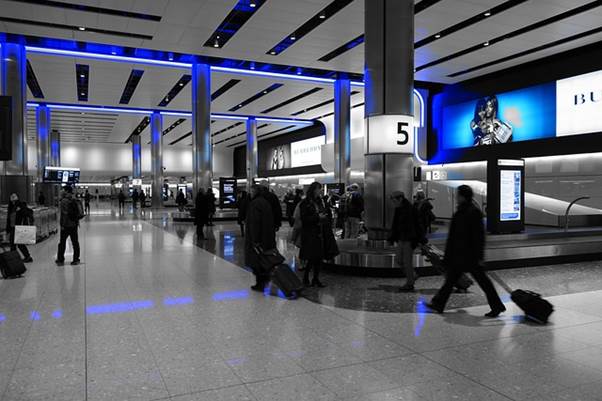In every city, town, or village, there are areas where people gather not for work or private life, but for shared experiences. These are known as public spaces parks, plazas, streets, libraries, and community centers that serve as the heart of collective life. They are not just physical locations; they represent freedom, belonging, and inclusivity. In an age where technology dominates much of our interaction, the role of public spaces in shaping social connections, cultural identity, and urban well-being remains vital.

What Defines Public Spaces?
Public spaces are areas that are accessible to all, regardless of age, background, or status. Unlike private property, they are designed for collective use. They can be formal, such as government buildings and squares, or informal, such as sidewalks and marketplaces. What sets them apart is inclusivity they invite participation and foster community interaction.
These spaces are also multifunctional. A park may be a place for exercise in the morning, a playground for children during the day, and a venue for cultural events in the evening. This adaptability is one of the strengths of public spaces, ensuring they serve diverse community needs.
Social Benefits of Public Spaces
One of the most significant roles of public spaces is their ability to bring people together. They promote interaction between strangers, neighbors, and families, helping build stronger social bonds. In diverse societies, such spaces encourage tolerance and understanding by offering a neutral ground where differences can coexist.
Public areas also provide opportunities for informal education and cultural exchange. A street performance, a local festival, or a community discussion held in open areas fosters creativity and shared learning. In essence, public spaces strengthen the social fabric by promoting connection, inclusivity, and belonging.
Public Spaces and Urban Health
Well-designed public spaces contribute directly to physical and mental health. Parks and walking trails encourage exercise, while green areas reduce stress and improve mental well-being. Access to nature within urban environments has been linked to lower anxiety and greater happiness.
Moreover, safe and accessible public areas encourage outdoor activities, reducing sedentary lifestyles. For children, playgrounds provide healthy physical development and opportunities for imaginative play. For older adults, benches, walking paths, and community gardens in public spaces create safe environments for socializing and staying active.
Economic Impact of Public Spaces
Beyond their social and health value, public spaces play an important role in economic growth. Attractive parks, pedestrian-friendly streets, and vibrant plazas often increase property values and draw tourism. Businesses thrive near areas where people gather, creating job opportunities and boosting local economies.
Events held in public areas such as farmers’ markets, festivals, and art fairs also generate income for small businesses and local artisans. Thus, investing in public spaces is not just a civic responsibility but also an economic strategy for thriving communities.
Cultural Significance of Public Spaces
Cultural identity often finds its strongest expression in public spaces. From historical monuments to community festivals, these areas preserve heritage and celebrate diversity. They provide a platform where traditions are shared and new cultural practices evolve.
For example, public squares in Europe are known for hosting centuries-old markets, while in Asia, community temples and courtyards serve as gathering points for festivals. In every part of the world, public spaces act as living museums of culture and history, allowing societies to celebrate both continuity and change.
Challenges Facing Public Spaces
Despite their importance, public spaces face numerous challenges in today’s world. Overcrowding, lack of maintenance, and safety concerns can reduce their accessibility. In many cities, urban development prioritizes private buildings over communal areas, shrinking the availability of open land.
Another pressing issue is privatization. Spaces once open to all are increasingly controlled by corporations or authorities that restrict access. This undermines the inclusive spirit of public spaces, turning them into exclusive zones rather than shared environments. Climate change also poses challenges, with rising temperatures and pollution threatening the usability of outdoor areas.

Public Spaces in the Digital Age
In modern society, digital technology has transformed the way we interact with public spaces. Free Wi-Fi, smart lighting, and digital displays have made parks and squares more interactive and engaging. However, the growing reliance on digital communication raises questions about whether virtual interaction might replace face-to-face encounters.
While online platforms connect people globally, public spaces remain essential for physical gatherings, grassroots activism, and real-world community building. Striking a balance between digital integration and preserving the natural, human-centered aspect of these spaces is key to their future.
Designing Better Public Spaces
To maximize their potential, public spaces must be designed with inclusivity, sustainability, and accessibility in mind. Key strategies include:
- Universal design to ensure people of all abilities can participate.
- Green infrastructure to improve environmental quality and resilience.
- Community involvement in planning so that spaces meet real needs.
- Safety measures such as proper lighting and open visibility.
When designed thoughtfully, public spaces become not only gathering places but also symbols of equity and sustainability.
Conclusion
Public spaces are far more than physical locations; they are the lifeblood of communities. They nurture social interaction, promote health, boost economies, preserve culture, and strengthen democracy. While challenges such as privatization and urban expansion threaten their existence, their importance remains undeniable.
Investing in and protecting public spaces is essential for building inclusive, resilient, and vibrant societies. As cities continue to grow, ensuring that everyone has access to welcoming, safe, and engaging shared areas will determine the quality of life for future generations. In the end, a community without public spaces is not just losing land it is losing connection, culture, and a sense of shared humanity.